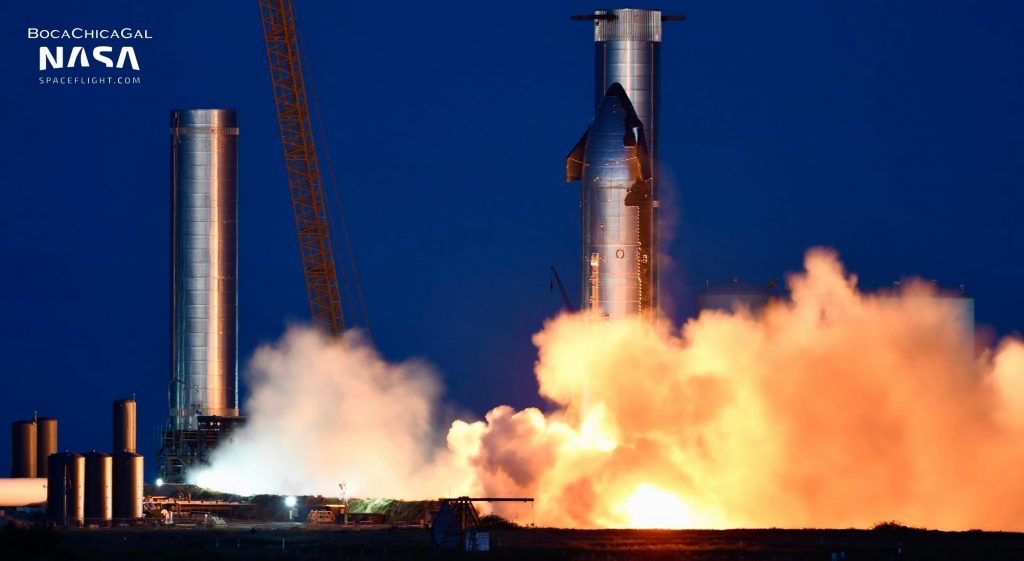
After almost six weeks of largely invisible work, longer than any other new Starship prototype has spent inactive at Starbase launch facilities, Ship 20 came to life for the first time during a ‘pneumatic proof’ test completed on September 27th.
On October 19th, near the end of a seven-hour test window, Starship S20 sort of fired up for the first time, completing what is known as a preburner test.Effectively the first half of static fire test without full ignition, it was nevertheless the first time a Raptor Vacuum engine was operated on a Starship prototype.
In perfect opposition to weeks of unprecedentedly slow testing, Starship S20 not only completed its first true static fire early in the test window, but it completed the first on-vehicle static fire of a Raptor Vacuum engine and then, just over an hour later, performed a second static fire – this time simultaneously igniting both a Raptor Vacuum and Raptor Center (sea-level-optimized) engine.
Aside from also marking the first time that two Raptor variants have been simultaneously fired on the same vehicle, Starship S20’s two-test surprise was technically the fastest back-to-back static fire SpaceX has ever completed, beating Starship SN9 by about 15 minutes!
Back in January 2021, SN9 completed an unprecedented three back-to-back-to-back Raptor static fires in less than 100 minutes as part of what Musk described as “[a day] about practicing Starship engine starts.” SN9 ultimately completed two of those tests in 75 minutes, setting a niche but still impressive turnaround record.